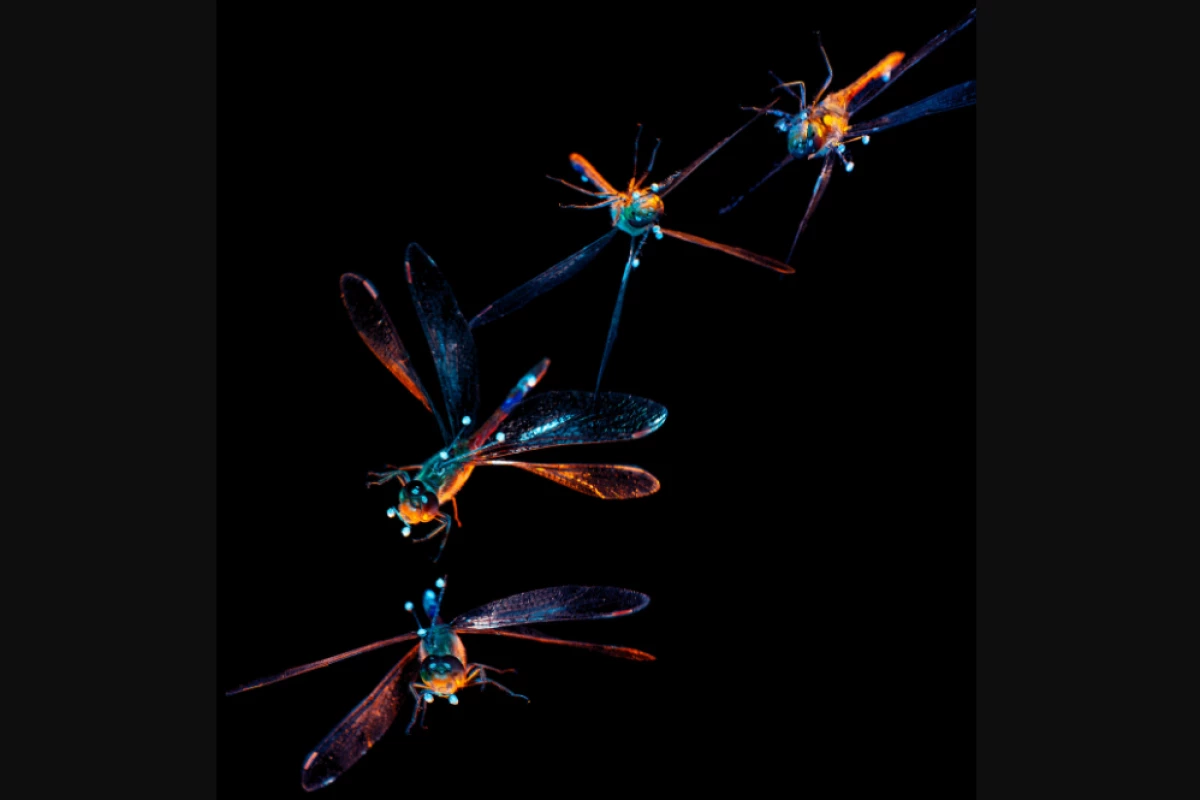If a drone were to inadvertently end up upside-down while flying, it would be good if the aircraft could automatically flip itself back over again, to avoid crashing. Such may someday be the case, thanks to a recent study on dragonfly flight.
Scientists at Imperial College London started by attaching tiny magnets to 20 common darter dragonflies, along with optical markers like those used to track actors' movements in motion capture systems. The magnets were utilized to attach the insects to a retractable magnetic mount, in either a right-side-up or upside-down orientation.
When they were released from that mount, the dragonflies naturally enough fell downwards. High-speed cameras, in conjunction with the markers, tracked the insects as they entered free-fall. The video was used to produce 3D animated computer models of their trajectory, for further analysis.
It was noted that while the right-side-up dragonflies had no problem orienting themselves and flying away, even the upside-down ones were able to right themselves by performing a sort of mid-air backwards somersault. The dragonflies were still able to perform this maneuver when unconscious, although a little more slowly.
In fact, although dead dragonflies couldn't initially perform the righting maneuver, they could if their wings were first properly pre-positioned. This suggests that the somersaulting was due to factors such as muscle tone and wing posture, as opposed to any physical actions initiated by the dragonflies.
It is now hoped that a similar functionality could be built into a failsafe wing design for use in aircraft such as fixed-wing drones.
"Engineers could take inspiration from flying animals to improve aerial systems," says Dr. Huai-Ti Lin, senior author of a paper on the research. "Drones tend to rely heavily on fast feedback to keep them upright and on course, but our findings could help engineers incorporate passive stability mechanisms into their wing structure."
The paper was recently published in the journal Proceedings of the Royal Society B. You can see a demonstration of the dragonfly-righting maneuver, in the video below.
Source: Imperial College London




